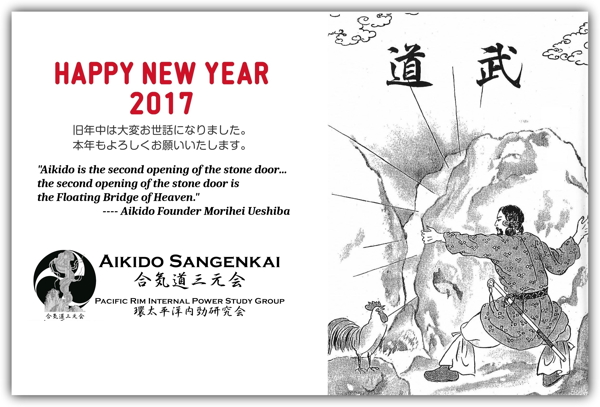
Happy New Year 2017 – the Year of the Rooster!
Thank you all for your help and support over the last year.
We had a great time training with everybody in 2016, and we’re looking forward to even more of us getting to train together in the coming year!
Can you spot the rooster on our New Year’s card? The illustration here is from the cover of “Budo”, a 1933 (2593 in Imperial Time) publication of the Dai-Nippon Budo Senyokai (大日本武道宣揚会) and Aikido Founder Morihei Ueshiba. As with 2017, 1933 was also the year of the rooster.
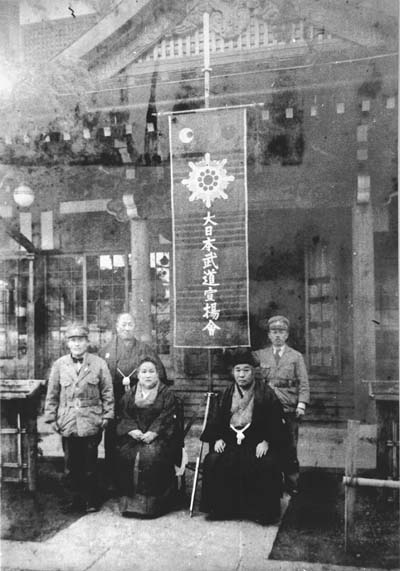
Under the Dai-Nippon Budo Senyokai (大日本武道宣揚会) banner
Morihei Ueshiba (left) with Sumiko and Onisaburo Deguchi in 1932
Aritoshi Murashige standing back right
The cover’s main theme is the opening of the stone door. As we can see on our New Year’s card above, Morihei Ueshiba often described Aikido as the “second opening of the stone door”. But what about the first opening?
The first opening of the stone door (sometimes the “stone door of heaven” / 天の岩戸) refers to a story from the Kojiki – the 8th century “Record of Ancient Matters that forms the basis for Japanese Shinto and was often referred to by Morihei Ueshiba.
Here is a summary of that story extracted from “Transmission, Inheritance, Emulation 11“, by Peter Goldsbury:
The Stone Door in the Kojiki
1. The behavior of the deity Susa-no-o (his ‘victory rage’ at having beaten the Sun Goddess Ama-terasu in the contest to make oaths and bear children – one of whom was Masakatsu-agatsu katsu hayabi), led to one of the most famous events in the whole mythology. Ama-terasu opened Ame-no-iwa-ya-to [Heavenly Rock Cave Door] and shut herself inside. This had a similar effect to that of the howling rage of Susa-no-o, mentioned above. ‘Myriad deities appeared like summer flies’, it was constant night, and ‘all manner of calamities arose’. The deities (there were ya-ho-yorozu-no-kami [many myriads of deities – in modern Japanese, eight million] at this point) held a meeting in the riverbed of the Ame-no-yasu-gawa [Heavenly Tranquil River] and gathered the cocks of Toko-yo [eternal world]. (This land is thought to be the home of the earthly deities and corresponds to the Takama-no-hara, where the heavenly deities dwelt. The cocks were made to crow in order to summon the sun at dawn.) The deities called upon the counseling services of Omoi-kane-no-kami [Thought Combining Deity], to make a good decision, and then took decisive steps to deal with this unprecedented situation, which the Kojiki describes in exhaustive detail.2. The deities first took hard rock from the river Ame-no-yasu-gawa and iron from Ame-no-kana-yama [Heavenly Gold/Metal Mountain] and enlisted the services of Ama-tsu-mara [Heavenly Blacksmith] and a mirror maker, named Ishi-kori-dome-no-mikoto [Stone Cutting Noble Deity]. Another deity, Tama-no-ya-no-mikoto [Jewel Ancestor Deity], was commissioned to make a long string of maga-tama beads and two other deities were commissioned to perform futo-mani [solemn divination]. These deities were Ame-no-ko-yane-no-mikoto [Heavenly Baby/Little Roof Lord] and Futo-tama-no-mikoto [Solemn Jewel/Spirit Lord]. They removed the whole shoulder bone of a deer from Ame-no-kana-yama, produced some hahaka [cherry or birch] wood and performed this ritual (which was similar to the ritual performed when Izanagi and Izanami failed at their first attempts to produce children). The two deities then pulled out a sakaki tree by the roots. The strings of maga-tama beads were attached to the upper branches and the giant mirror was hung from the middle branches. White and blue cloth was hung from the lower branches. Finally, Futo-tama-no-mikoto somehow held these objects in his hands, while his colleague Ame-no-ko-yane-no-mikoto intoned futo-norito-goto [solemn chanting]. Another deity, Ame-no-Ta-jikara-o-no-kami [Heavenly Hand Strength Male Deity] stood behind the door, while Ame-no-uzume-no-mikoto [Heavenly Formidable Female Deity] became divinely possessed by turning over a bucket and stamping on it, with ma-saki vine in her hair and bundles of sasa leaves in her hands, and exposing her breasts and genitals. Then Takama-no-hara ‘shook’, ‘as all the eight hundred myriad deities laughed at once.’
3. This elaborate ceremony had the required effect, for Ama-terasu opened the door a tiny crack and wondered aloud why Ame-no-uzume was singing and dancing and all the deities were laughing. Ame-no-uzume responded that they had found a deity superior to Ama-terasu. At which point Ame-no-ko-yane and Futa-tama brought the mirror and showed it to Ama-terasu. As the latter approached the mirror, Ame-no-Ta-jikara pulled her out and Futa-tama extended a rope behind her, saying, “You can go back no further than this”. Light was restored to the Takama-no-hara and to Ashi-hara-no-naka-tsu-kuni [Central Land of the Reed Plains = Japan].
In the Kojiki, this is the story of how the light of Ama-terasu returns to the world. Certainly a good thing for all concerned. 🙂 It’s also said (by some) to be the origin of clapping at Shinto shrines – in order to attract the attention of the god in the cave.
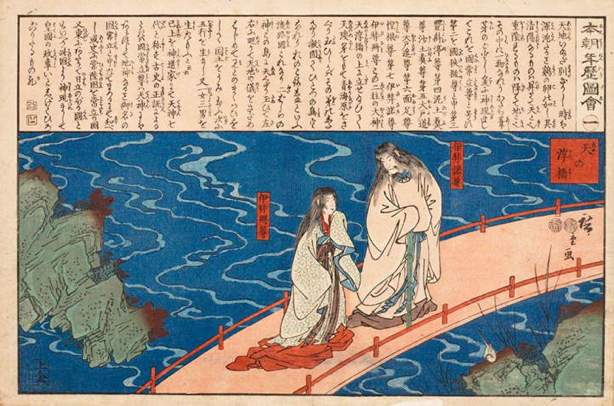 The Gods Izanagi and Izanami on the Floating Bridge of Heaven
The Gods Izanagi and Izanami on the Floating Bridge of Heaven
from the series “An Illustrated History of Japan”
by Utagawa Hiroshige, circa 1847-1852 – Honolulu Academy of Arts
Moving on, we can see that Morihei Ueshiba stated that the “second opening of the stone door is the Floating Bridge of Heaven”. Conversely, one could therefore say that since “Aikido” = “second opening of the stone door” and “second opening of the stone door” = “the Floating Bridge of Heaven” that “Aikido” = “the Floating Bridge of Heaven”. Fortunately, we don’t have to do that…because Morihei Ueshiba already did:
合気道は「天の浮橋に立たされて」ということである。
It is said that Aikido is “Standing on the Floating Bridge of Heaven”.
We examined the Floating Bridge a little bit in “Aikido and the Floating Bridge of Heaven“, where we saw that the Floating Bridge (with the opposing forces of Yin and Yang, Heaven and Earth, represented as the gods Izanagi and Izanami) is actually a form of the classic “Ten-chi-jin” (“Heaven-Earth-Man”) model that is so common in Chinese martial arts – the Yang of Heaven and the Yin of Earth united in Man:
合気道は天地人和合の道と理なり。
“Aikido is the Way and Principle of harmonizing Heaven, Earth and Man.”
As a side note, the three elements that are modeled by the Floating Bridge make up Morihei Ueshiba’s “Sangen” (as in the “Sangenkai“) – the basic elements of the Universe, and the basic elements of his training method. In any case, he was repetitive about the importance of the Floating Bridge:
この道は、天の浮橋に最初に立たなければならないのです。天の浮橋に立たねば合気は出て来ないのです。
In the Way, you must first stand on the Floating Bridge of Heaven. If you do not stand on the Floating Bridge of Heaven then Aiki will not come forth.
So…moving from the the unification of opposites (Yin and Yang, In and Yo, Heaven and Earth) to the stone door…
△○□の鍛練、引力の養成により光と熱と力を生ず
The training of the triangle/circle/square and the training of connective force begets heat and light and power.
I should note here that Morihei Ueshiba stated that the triangle/circle/square is another way of modeling the Floating Bridge, and that the “connective force” that he’s talking about here is the force that joins opposing forces. The training of that connective force, by the way, was something called “Takemusu” (as in “Takemusu Aiki” – more here…) by the Founder.
In other words, “standing on the Floating Bridge of Heaven”, a training method that unites opposing forces in the body”, creates heat, light and power – physical power, internal power, martial power.
Happy New Year!
Published by: Christopher Li – Honolulu, HI

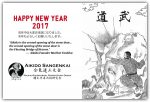
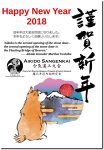
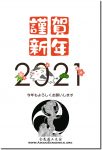
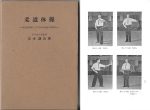
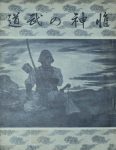
Thank you Chris,
Just a side note to the opening of the rock cave door. It is a fundamental spiritual revelation, an understanding of an enlightenment where we realise we’ve been in darkness, ignorant of our true state of being, when lightness and joy brings us out of ourselves to behold our true face in the mirror. This goes beyond mere Aiki practice into the very soul and spirit and meaning of life itself. O Sensei uses this story and vivid imagery to tell us about a hidden world yet to be discovered by most of us. It’s a personal journey of life, death and resurrection. It points to the ultimate aim in Aikido is spiritual, not martial. Follow O Sensei’s intention all the way.
Happy new 2017!
Happy New Year Bjorn!
Yes, that’s right – but I think that it’s important to note that, in many ways, O Sensei didn’t clearly differentiate between the physical/spiritual/micro/macro/personal/societal aspects of what he was doing, which was actually a classic usage of the Chinese heaven-earth-man model.
This means that, for him, the physical aspect of his model was inextricably tied up with the philosophical/spiritual/societal aspects as well. So no physical/technical Aiki = no philosophical/spiritual/societal Aiki either. Or at least, the method you used to get there would be different – he talks about this a bit in “Take Musu Aiki” at one point, saying that this way was “the only way that he knew”. In other words, there were other methods, but this was the train that he happened to be riding.
It can get difficult to summarize because once you start pulling on one of the threads you get a whole lot of fabric unravelling :). It’s also tricky (IMO) because some of the mental/spiritual aspects can go into left field in places like the internet – in other words, the trick is how to get to the universe without getting lost in space. 🙂
Best,
Chris
Thanks Chris, I do believe O Sensei did not distinguish his martial art (Aiki) from his spiritual misogi as that was his path from childhood. But I must stress the point that most likely, as with me, the martial attraction was the entry point that subsequently lead to a spiritual pursuit, out of an existential necessity that lies inherent in us as not yet realised potential. It’s a human endavor, this calling, not exclusive to Aiki (which we do understand) but existential in all of us. The point I’m stressing is that we as martial artists may forget this if we fix undo attention to the marvellous qualities experienced through Aiki. After all, Ego death is not about gain. Why is this important for us as Aikido practitioners to remember? Because it’ll remind us that we can’t rely on Aiki to ‘save’ us. Only a deep letting go, a surrender, will afford us access to the beauty O Sensei describe as universal love, and such. That’s when we finally lay down our arms and breathe a sigh of relief, and find the original meaning and purpose of Bu. Then and only then will your Aiki development align with the Gods, or with the true nature of Spirit.
And, sorry Chris, can’t help myself, this realisation and its maturing leads us into a universal relationship which we can take much further together. We can come together to share an experience of oneness, no otherness, that can become a climax of extraordinary proportion. It’s a joint endavor, no more a solo exercise. A conscious awake entity shared among a group of individuals that set their Ego aside to join a larger sense of self. This is hooking up with a universal Self that goes way beyond the individual.
Sorry, just saying..